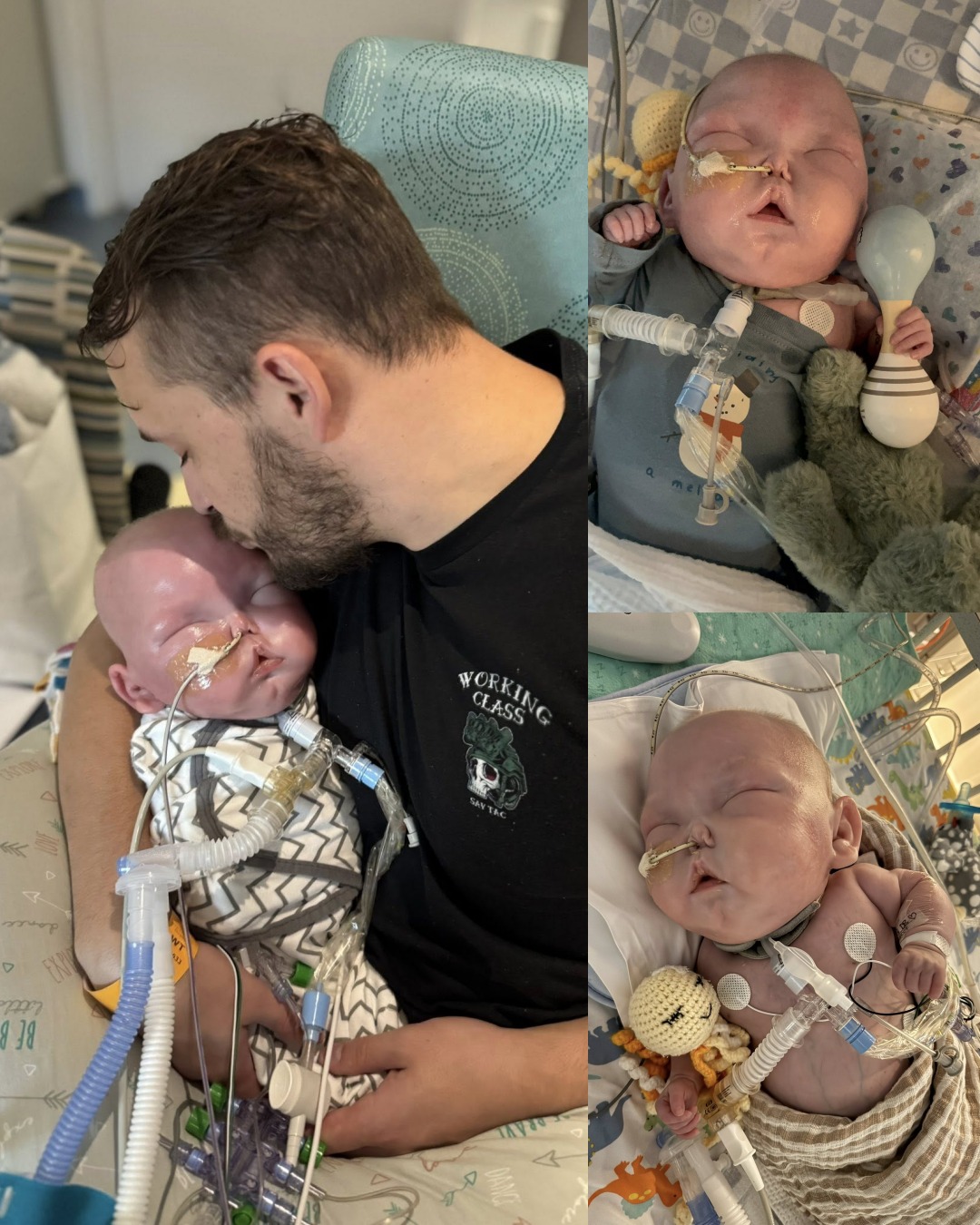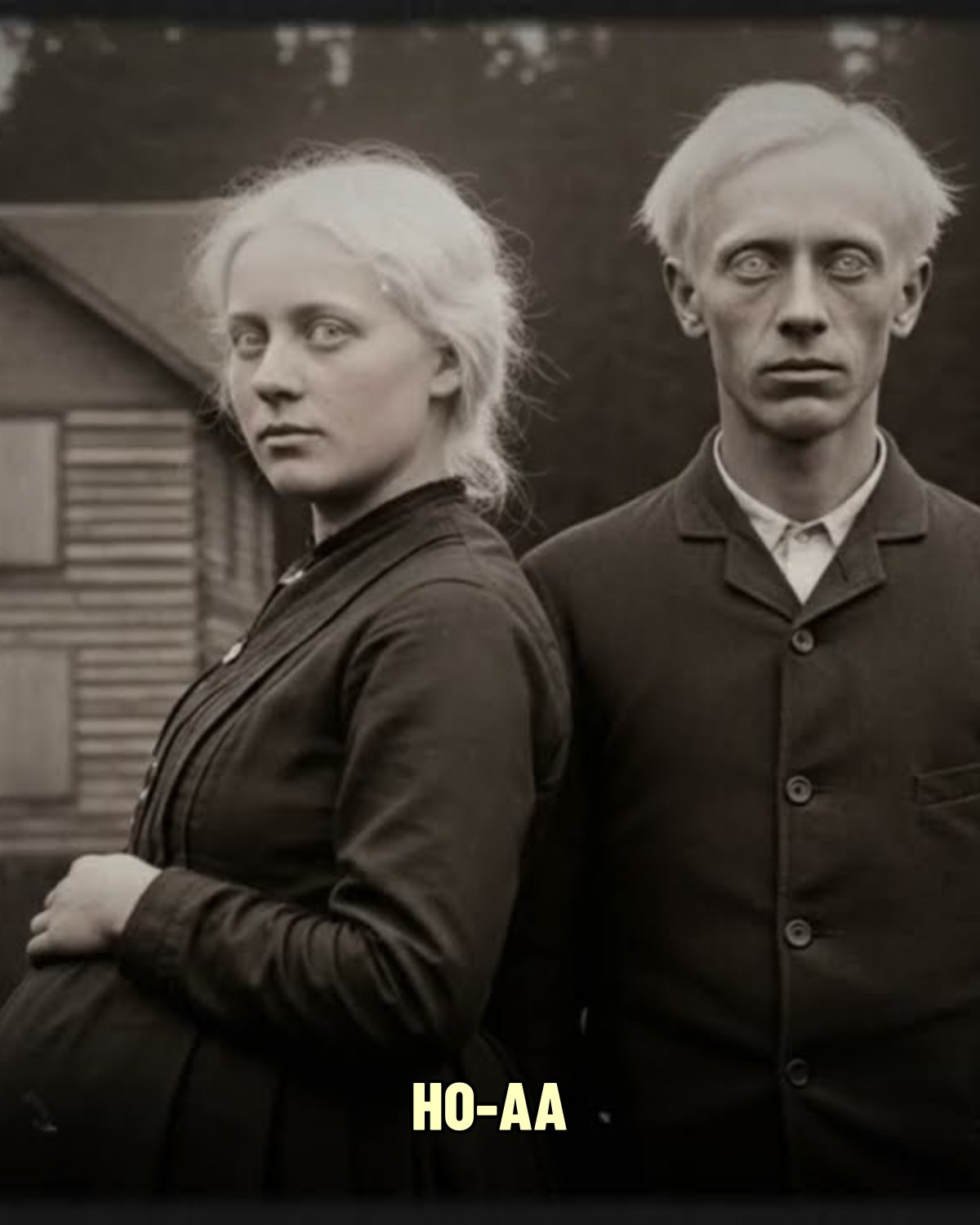The morning began with quiet monitors and cautious hope.
Theo’s numbers came in — and his mother’s heart sank again.
Her intuition had been right all along: his CO₂ was 81.
Too high.

The medical team moved swiftly, increasing his PIP to 60 — back to the level he’d needed before the trach.
But this time, she wasn’t scared.
She wasn’t discouraged.
Because Theo was awake.
He was breathing with the ventilator, not fighting against it.

Every parent of a medically fragile child learns to read more than charts.
They read breaths.
Pauses.
Tiny movements that tell entire stories.

She had noticed the signs — the uneven breathing, the labored chest, the way his numbers flickered wrong.
Something wasn’t right, she told Toby yesterday.
She knew her baby.

Theo’s medical journey is not one of linear progress.
It’s a dance of balance — support too high, and he grows dependent; too low, and he fights for every breath.
After his tracheostomy, they had lowered his PIP from 60 to 56 because his blood gases looked perfect.
But that perfection was an illusion — Theo had been paralyzed and deeply sedated.
He wasn’t participating in his own breathing.

When sedation began to ease, the truth returned: his small body wasn’t ready for the reduced support.
His CO₂ rose again, and his breaths became irregular — “wonky,” his mom said with a tired smile that carried both humor and heartbreak.
Theo wasn’t failing.
He was communicating — in the only way his fragile lungs knew how.
He was saying, I’m trying, but I’m not ready yet.

“It makes sense,” she told herself. “He’s a chronic baby.”
Those words weren’t defeat; they were understanding.
Theo’s lungs had been through battles far beyond his months.
You can’t rush healing in a body that’s been fighting since birth.

Every change in settings, every reaction, every tiny setback — it all became data.
Each day, she learned a little more about her son.
What comforted him.
What tired him.
What gave him the space to just be.

Every mishap, she told herself, was an opportunity to know Theo better — to become a stronger advocate, a more patient mother.
And in that truth, she found her calm.

Just a day earlier, on October 22nd, the air in the room had been even heavier.
Theo was having what she called “clamp downs” — episodes where his airway tightened, forcing his tiny chest to work overtime just to draw in air.
Worse, there was blood in the secretions when the nurses suctioned his trach.
She watched it happen — the red against the sterile white — and felt her heart shatter, again and again.

The ENT team came in to evaluate.
Scopes were brought, machines wheeled in.
The diagnosis was clear: tracheomalacia.
His airway was collapsing — just 1 centimeter above the carina, where the windpipe divides toward the lungs.

There were two options.
Option one: a custom trach.
Option two: increase his PEEP, the pressure that helps keep his airway open.

But option one wasn’t possible.
Theo was too small.
The custom trach would reach too far, touching the carina and risking something called a vagal response — a dangerous reaction when the vagus nerve is stimulated, leading to sudden drops in heart rate or even loss of consciousness.

So they chose option two.
His PEEP went from 13 to 16, and his PIP from 56 to 58.
More support.
More pressure.
More strength for lungs that had never known rest.
But even then, she knew deep down — it still wasn’t enough.

She spent hours beside his crib, one hand resting over his belly, feeling every rise and fall.
She could see him using his whole body to breathe.
His ribs pulling in with each inhale, his chest trembling under the strain.
“He’s still working too hard,” she whispered.
“I can feel it.”

Her instincts were rarely wrong.
Not born from textbooks, but from long nights and trembling prayers, from counting the seconds between alarms, from watching her child live in a place between fragility and defiance.

She didn’t want to hear more talk of second opinions or hospital transfers.
Theo’s team knew him — truly knew him.
He wasn’t a puzzle to solve; he was a life to understand.
“Besides the swelling and his lungs,” she said softly, “Theo is just a regular baby.”

And that’s what made it all so heartbreaking — and so beautiful.
Because beyond the medical charts and ventilator hums, Theo was still a baby.
A boy who liked to feel his mother’s hand on his chest.
Who twitched in his sleep when she whispered his name.
Who had a spark in him that refused to dim.

Every day, she told him the same words: “Take as long as you need.”
She didn’t want him rushed.
Didn’t want milestones forced or progress measured in numbers alone.
If it took weeks, months — she would wait.
Because she didn’t just want him home — she wanted him home healthy, happy, and free.

Yesterday, she had told Theo’s primary doctor something that stayed with everyone in the room.
“If I can handle Theo at his worst,” she said — her voice steady despite the exhaustion in her eyes — “then I’ll be ready to care for him when he’s home.”
That was her truth.
Her faith wasn’t in fast recoveries or sudden miracles.
It was in time.
In growth.
In the small, steady steps that bring fragile babies like Theo closer to life beyond machines.

So she sits by his bedside — another morning, another round of adjustments, another prayer whispered through the steady hiss of oxygen.
Theo sleeps, his tiny chest rising and falling beneath the soft glow of monitors.
Outside, the world moves on, unaware of this quiet fight.

But inside that room, love fills every breath.
And though the journey stretches endlessly ahead, she knows — every heartbeat is progress.
Every exhale is hope.




